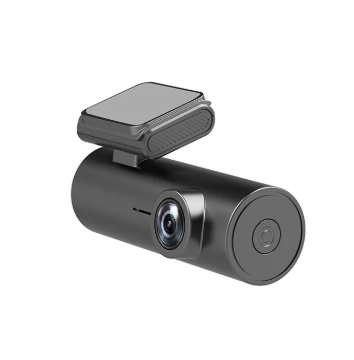Understanding 4G Network Technology in Trail Cameras
How 4G Replaces WiFi for Data Transmission
Trail cameras equipped with 4G tech no longer rely on WiFi connections when sending data. While traditional WiFi needs a router within range, 4G works through cell towers instead. This makes a big difference for people tracking wildlife or monitoring properties where setting up WiFi isn't practical. With 4G, these cameras can actually transmit photos and video footage straight to smartphones or upload to cloud services automatically. The convenience factor is huge for anyone who spends time outdoors checking camera feeds. Field tests show that 4G signals reach much farther than most WiFi networks and work better through obstacles like trees and rocks. That reliability matters a lot when cameras are placed deep in forests or mountainous regions where signal strength drops off quickly.
Cellular vs. WiFi: Key Differences
When it comes to trail cameras, the biggest factor separating cellular from WiFi connections is basically how far they work. Cellular networks stretch much further than what most WiFi setups can handle. With 4G tech built in, these cameras actually send HD pictures and videos way quicker than before. Security matters too when setting up remote monitoring systems. Unlike open WiFi spots where anyone might stumble upon them, cellular links keep things locked down pretty well. WiFi signals tend to get messed up by walls, trees, or even weather conditions sometimes. But cellular towers just keep broadcasting no matter what's going on outside. That kind of stability means hunters and wildlife watchers don't have to worry about their camera feed cutting out during important moments in the field.
Core Components Enabling 4G Connectivity
SIM Cards and Carrier Compatibility
The SIM card plays a crucial role in getting those 4G trail cameras connected properly. Basically, it serves as this special ID tag for the cell network, which helps keep all the data transfers safe and secure. For best results, folks need to make sure they pick cameras that work well with whatever cell provider they already use at home or business. A lot of modern trail cameras actually ship with SIM cards already inside them, which makes things much easier for people who aren't tech savvy. Looking at what the experts say, going with a good name brand carrier tends to boost performance while cutting down on those annoying times when the camera just stops working. When picking out a carrier, don't forget to check how good their coverage is across different regions and how reliable their service generally is. Getting this right means the trail camera will stay active even deep in the woods where signals tend to be weak or inconsistent.
Data Plans: Prepaid vs. Subscription Models
The decision between prepaid and subscription data plans for 4G trail cameras really comes down to how often they'll be used. Prepaid options give people more freedom since there's no pressure to commit to monthly fees or sign lengthy contracts. Great for folks who want to keep things simple and avoid getting locked into something they might not need all the time. On the flip side, subscription services work better when someone needs regular access to data because these plans typically come with unlimited usage which makes sense for continuous camera monitoring. Looking at prices across different carriers matters a lot too, particularly if cameras are going to be set up far from civilization where signal strength might be spotty. Some companies actually let extra data roll over month to month, which can save money for people whose usage varies throughout the season instead of wasting what goes unused each billing cycle.
Signal Requirements and Optimization
Cellular Coverage Essentials
Knowing how good the cell reception is where you plan to set up matters a lot when it comes to getting the most out of those 4G trail cameras. When there's a solid signal, the cameras work better overall and send their pictures faster too, so folks checking them get updates without waiting around forever. Before setting up shop in any particular spot, take a look at different carrier coverage maps online just to see if what camera model someone picks actually works well there. Trees packed tight together or big buildings standing between the camera and tower? Those things mess with signals pretty badly. That's why positioning counts so much - try to find spots where nothing blocks the view straight to the nearest cell tower. And don't forget to test signal strength before actually installing anything either. Saves headaches later on when everything starts working properly right from day one.
Signal Boosters and External Antennas
Signal boosters really help 4G trail cameras work better when reception is weak. When hunters attach those external antennas to their cameras, they actually get much better coverage. This means cameras can now go places that were totally out of reach before like deep woods or mountain trails. Good quality boosting gear does double duty too it cuts down on lag time when sending data back to the phone or computer while making sure the whole camera system runs smoother overall. Talking to someone who knows about this stuff makes all the difference though. Getting advice tailored to particular hunting grounds helps squeeze every last bit of performance from those boosters and antennas. Most folks find their equipment works pretty well almost anywhere after proper setup, though there are still spots where signals just won't cooperate no matter what.
Power Management Without WiFi Dependency
Battery Types and Longevity Strategies
Understanding the battery types for 4G trail cameras is essential for efficient power management. Most 4G trail cameras rely on lithium-ion batteries, which offer longer life and better performance than traditional alkaline batteries. Here are some strategies to extend battery life:
- Low-Power Modes: Utilize low-power modes to reduce battery consumption during periods of inactivity.
- Data Transmission Settings: Set your camera to transmit data only when necessary, minimizing power usage significantly.
- Maintenance Routines: Regularly check battery connections and proactively replace batteries to prevent operational failures.
- High-Capacity Options: Manufacturers often recommend high-capacity or rechargeable batteries for a more sustainable approach.
These steps not only enhance camera performance but also provide a reliable solution for continuous monitoring in remote areas.
Solar Panels for Remote Operation
Solar panels are an invaluable power solution for 4G trail cameras, particularly in remote locations. They provide a sustainable energy source, reducing dependency on frequent battery replacements. Notable advancements in solar technology have made smaller panels more effective, supporting continuous camera operation. Here are key aspects to consider:
- Installation & Positioning: Proper installation is criticalâensure solar panels are positioned to capture maximum sunlight for optimal battery maintenance.
- Operational Consistency: Combining solar power with battery backup significantly extends operational time between maintenance checks.
- User Insights: Studies indicate that this combination improves reliability, especially in areas lacking traditional power sources.
Integrating solar panels with trail cameras ensures seamless monitoring, enabling users to focus on data without worrying about power interruptions.
Advantages of 4G Trail Cameras Over WiFi Models
Real-Time Alerts in Remote Locations
What really sets 4G trail cameras apart is how they send instant notifications straight to people's phones. Hunters, wildlife experts, and security folks find this super useful since they can react right away when something shows up on camera. Getting those quick alerts makes all the difference when tracking animals or keeping an eye on a property. Research indicates most folks who use these 4G models tend to be happier overall because they don't have to keep traveling back and forth to check remote spots. The whole experience becomes much smoother operationally speaking, plus it helps with managing wildlife populations better too. Conservationists especially appreciate being able to monitor areas without disturbing them so much.
No Proximity Limitations to WiFi Networks
What makes 4G trail cameras so valuable is how they work without needing to be near a WiFi signal. These cameras function great even when placed deep in forests, mountains, or other places where cell service might be spotty at best. Wildlife researchers and nature photographers love this because it lets them monitor activity without worrying about finding a spot with decent internet connection. Since most major carriers have expanded their 4G network reach across rural regions, folks can check footage from almost anywhere on earth now. The ability to stream video remotely has completely changed how people track animals and secure properties. No more trekking back and forth just to retrieve memory cards. For anyone doing serious tracking or security work in tough terrain, having a camera system that doesn't rely on local WiFi is absolutely essential.
FAQ
What makes 4G trail cameras superior to WiFi trail cameras?
4G trail cameras offer wider coverage and faster data speeds, allowing real-time alerts and monitoring without being restricted by WiFi range limitations.
How do SIM cards enhance 4G trail camera performance?
SIM cards are crucial for 4G trail cameras as they facilitate secure connections to cellular networks, which improves data transmission and accessibility.
Are solar panels effective for 4G trail camera power management?
Yes, solar panels provide a sustainable power source, reducing the need for frequent battery replacements and enhancing camera operation in remote areas.




